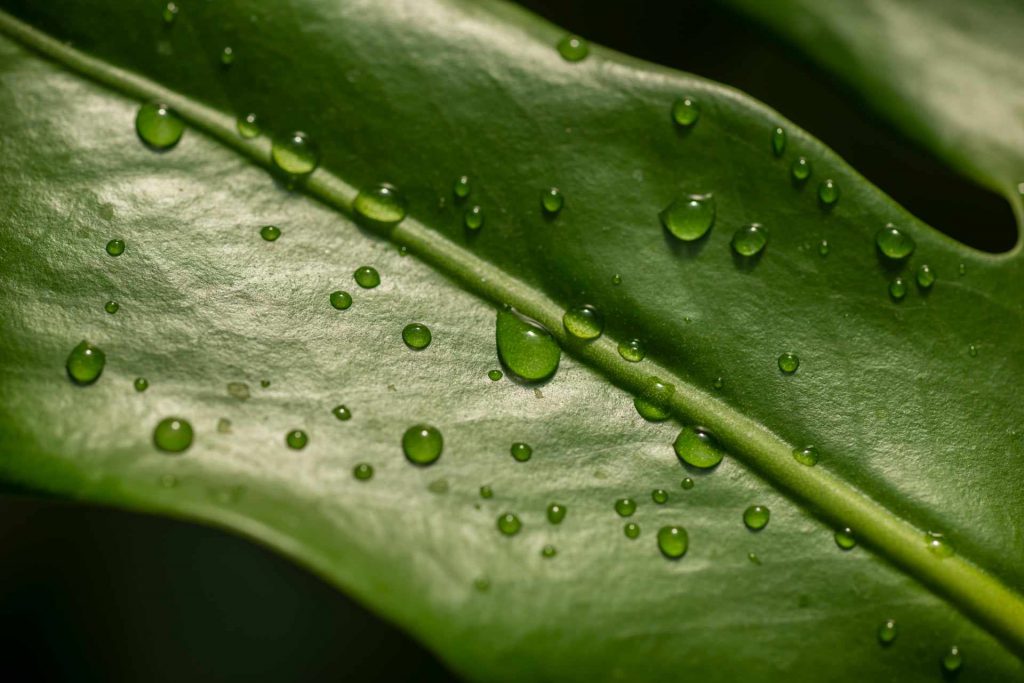Crop rotation and greenhouse cleaning: an explanation of the necessity and the steps
How important is well-prepared crop rotation for your next cycle? This article will focus on the reasons why modern growers pay close attention to their crop rotation. We will also discuss which aspects deserve extra attention. We will share tips and tricks, and mention specific examples and the products with which we make a difference for our customers.
Crop rotation and the way growers approach it differs for each region and grower. The timing of the harvest also has an impact on this. In Canada, for example, growers generally leave their greenhouse empty in the cold month of December, which gives them plenty of time to clean. The same applies to Spain, where they grow from August to May resulting in empty greenhouses in the hottest summer months. In the Netherlands, however, clearing and cleaning has to be done during a far shorter period of time in order for crop rotation to run smoothly. Efficiency is therefore paramount.
However, the reasons for paying close attention to your crop rotation are the same in every region:
- maximising crop yield
- preventing diseases and the spreading of disease

Crop rotation: optimising the greenhouse yield
Crop rotation is necessary because the plant and the substrate will be exhausted after a little less than a year. If you have a vegetable crop – for example, a tomato – this plant can grow up to 18 metres long and it will have fought off a number of diseases during its growth cycle. At some point, the root system is no longer in order and the substrate is exhausted. In short, the plant will no longer yield enough from that point onwards. The weakening plant will be far more susceptible to disease and therefore requires more attention and correction. This is why, in vegetable cultivation, a crop will generally produce for a maximum of one year.
The situation is different in floriculture. Gerberas or roses, for example, can produce for about five years. In an upward production trajectory, it is evident that the older a plant becomes, the more it will produce. At some point, however, the optimum level is reached and the line goes down again. But it could also simply be due to market demand. Take an Orange rose, for example, which is very popular now, but which will not yield anything in a few years from now. In this scenario, such a crop will be cleared prematurely.
Hygiene in the greenhouse prevents diseases in the crop
In addition to maximising the yield from your greenhouse, there is another important reason to pay close attention to crop rotation. An exhausted crop is more susceptible to diseases and you want to prevent diseases from the old crop from recurring in the new crop.
Hortus Supplies International assists its customers and partners with a proper preparation and efficient implementation of crop rotation. We are ready to offer advice and support and have available the products required to make crop rotation run smoothly. Do you wish to know more about what this means for your company? Please contact us.
AquaJet
De kas reinigen tijdens teeltwisseling doet u met AquaJet. U kunt de kas eerst reinigen met de AquaJet en vervolgens ook afspuiten.
Crop rotation: which phases are there and what should I pay attention to?
At the end of the growing period, the grower stops feeding as a result of which the crop partially dies. This ensures that there will be less green mass after clearing and it results in lower waste costs.
Crop rotation: clearing old crops
The plants in the greenhouse are generally supported by means of rope. This rope is cut and the plants fall into the paths on the canvases. At the beginning of the path, a crop shredder has been set up which rolls up and shreds the canvases with the plants on them. The green waste is taken to a central party that processes it properly.
In the Netherlands, it is generally contractors that supply the canvases, machines, waste containers and personnel to clear all the plants from the greenhouse. The grower does not have to do all this alone. A grower plans the time at which the greenhouse has to be cleared and can rely on support. The contracting company generally serves a large number of regular customers in a particular region. However, in North America, for example, the distances are too long for this. US companies generally have their own shredder. This makes them independent.
Crop rotation: removing the substrate
Tomato or bell pepper plants grow on coconut or mineral wool slabs that will also have to be removed from the greenhouse. These are taken to a waste disposal site where they are digested and recycled. This process is generally organised less well outside the Netherlands. In the Netherlands, all sorts of waste materials are properly separated and given a place, but growers in other countries generally put it behind their greenhouse. Of course, the waste will decompose over time, but these growers sometimes forget that all sorts of contamination and diseases can be hidden in this waste. For example, an infection could spill over to their greenhouse with all the consequences this entails. We therefore advise our customers to consider this carefully: where do you leave your waste after the crop rotation?
Replacing or cleaning ground covers
Ground covers are usually replaced once every five years, so this is an exception. During each crop rotation, however, the pipe rail system is suspended from the greenhouse construction so that all crop residues fall to the ground and can be swept out of the greenhouse. Some insects will penetrate the ground cover and end up in the soil, and this why some growers also treat the soil with (natural) crop protection agents. Needless to say, the ground cloths are also cleaned during the cleaning of the glass stands.
Cleaning the glass stands in the greenhouse
The grower will start by removing chalk and other pollution from the greenhouse roof with a special cleaning machine. The glass stands on the inside of the greenhouse are also thoroughly cleaned with a machine that is able to move across the pipe rail system. Our preferred machine is a machine with movable sprinklers that move back and forth across the greenhouse roof. These machines enable growers to clean the inside of the greenhouse thoroughly and completely within a short period of time. This is a huge advantage over manual cleaning, which generally takes place in several rounds (cleaning and rinsing) which results in labour costs. Moreover, our special cleaning agent, Organic Clean XL, leaves a residue that prevents dirt from adhering to the newly cleaned glass stand.
Organic Clean XL
Organic Clean XL makes cleaning severely contaminated surfaces easy. This biodegradable cleaning agent is not harmful to any crops still in the greenhouse.
Cleaning the screen cloths
Only few parties dare to clean the screen cloths, and this is why few methods and resources are available – and screen cloths are certainly a factor in the field of hygiene. Hortus Supplies International supplies an excellent natural product for this, and has been testing it extensively for several years together with a partner. It is not harmful to the environment, and it boasts a high degree of effectiveness. Several customers of ours are already using it to clean their screen cloths, and this enables them to take their hygiene standards to even higher levels.
Cleaning and maintaining irrigation systems
Each plant has a pen with a micro-tube running from the main pipe, which periodically releases water with nutrients for the plant. So-called biofilm will develop on the inside of the tube during use throughout the year, which will build more pressure in the system. In addition, various fungi or diseases may form on the pen. There are three ways to fix this:
- Using specific fertilisers that prevent biofilm from forming
- Actively adding chlorine to the irrigation system; this will not damage the crop and prevents diseases and the forming of biofilm
- Cleaning the entire system with acid during crop rotation or using a ‘shock treatment’ with stabilised hydrogen peroxide and extensive rinsing
Freebac
How important is well-prepared crop rotation for your next cycle? This article will focus on the reasons why modern growers pay close attention to their crop rotation. We will also discuss which aspects deserve extra attention. We will share tips and...
Cleaning the growing gutter: the importance of a proper cleaning agent
Substrate naturally lies on so-called growing gutters, steel gutters with a special coating that collects and removes excess water with added nutrients. These gutters should also be cleaned thoroughly with special machines that can move across the pipe rail system.
The cleaning agent is an important aspect here. Needless to say, chlorine cleans everything thoroughly and is very cheap. In the long run, however, it will also affect the material or coating you use. It will work well in the short term, but it will certainly affect the lifespan of your installation in the long term. As growing gutters are a substantial investment, we always advise our customers to invest in this long lifespan. On top of this, cleaning increasingly occurs with special agents due to reasons of hygiene. This way, growers know for sure that they will keep certain infections at bay. The benefits of these special cleaning products far outweigh the slightly higher costs.
Virkon S
Virkon is a disinfectant used globally in livestock farming. It is recommended by the industry and governments for prevention + control of animal disease.
After the growing gutters have been cleaned, your greenhouse will be ready for the next crop.
Do you have any questions about a specific aspect of crop rotation or would you appreciate it if one of our specialists took a look at your plan of action for the next crop rotation? Then contact us!

How can we help you?
Do you have a request or a comment about our services, products or do you just have a question. Then contact us!
Call our sales team at: +31 297 5249 19
Mail us at: info@hsibv.com



